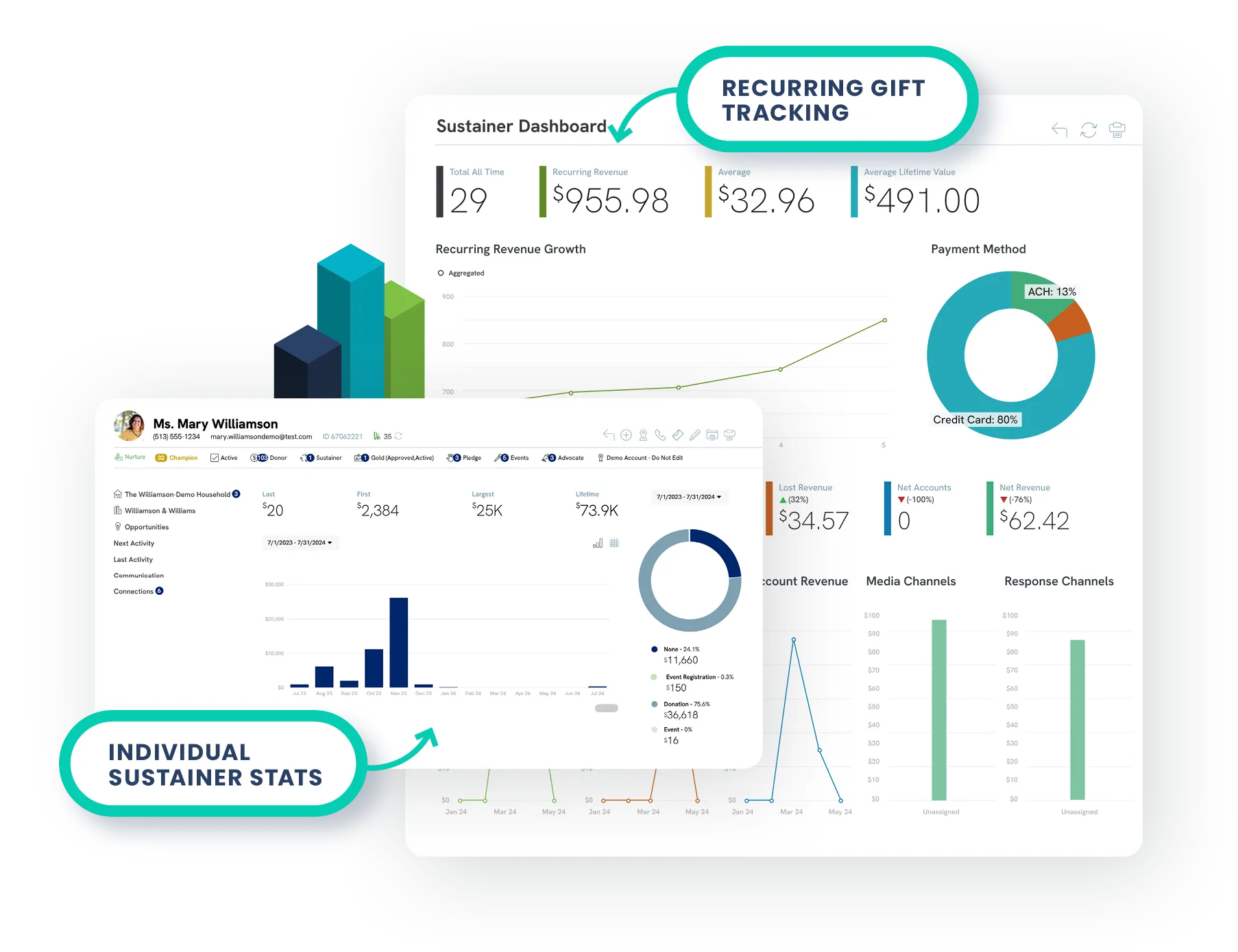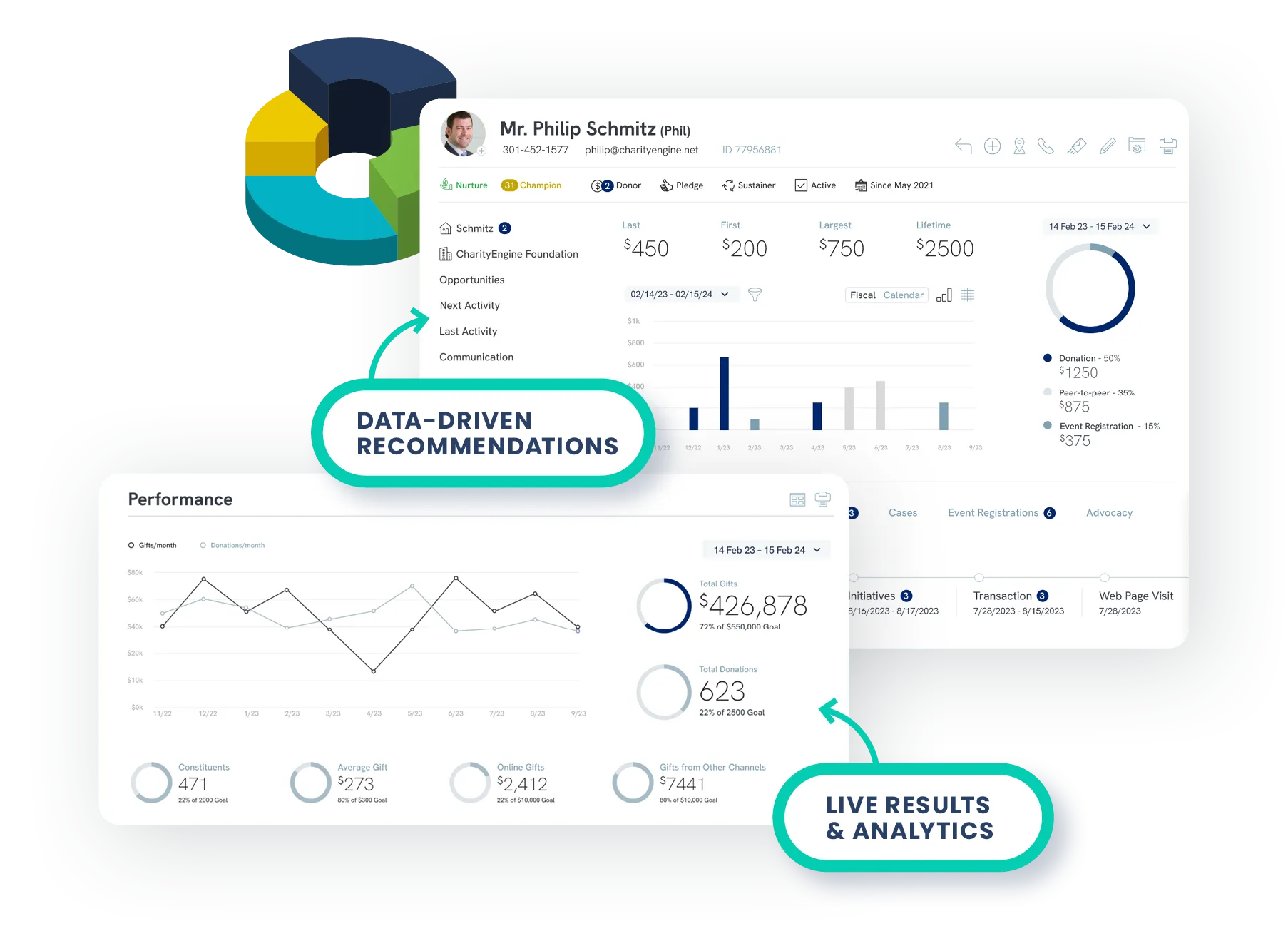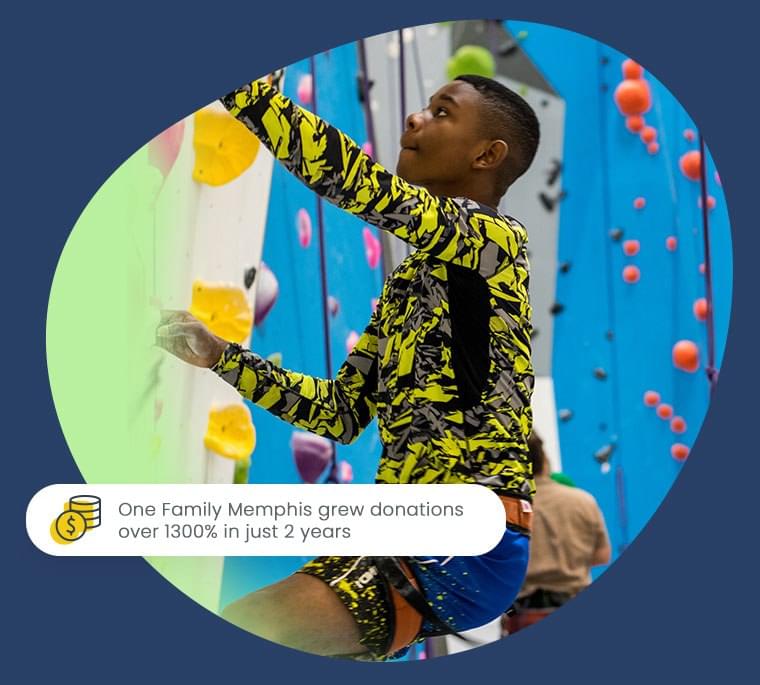Leverage out-of-the-box and customized reporting capabilities to get answers and actionable insights with CharityEngine’s nonprofit analytics software. Our powerful tools ensure your data is always available.
See CharityEngine In Action
It pays for itself, guaranteed...or your money back!
All of your great data won't trigger growth unless you measure, analyze, and act on it. Extract insights through automated reporting with advanced query options and easy-to-use, configurable dashboards. CharityEngine's business intelligence analyzes patterns to highlight opportunities for your nonprofit to grow.

We power charities of all sizes to be great, but our bigger clients appreciate our sophisticated analytics capabilities. With enterprise-level Microsoft BI, your nonprofit is powered to make data-driven decisions. Data is hosted in a data warehouse (DBaaS) for ultimate security and peace of mind.
Book a DemoEvery interaction with your donors should influence your next outreach efforts. Let your CRM record every touchpoint and show you the path for making the biggest impact possible.
Query your data any way you want. Use dozens of off-the-shelf reports or create your own using SQL and Boolean logic and data manipulation.
For those clients who need it, we have Microsoft Power BI to create interactive dashboards and mine large amounts of data quickly to deliver strategic insights.
Most nonprofit software products offer some level reporting and analytics, but a nonprofit CRM with enterprise-level capabilities can make a massive difference as you plan your growth strategy.
From tracking budgets and expenses to allocating resources, analytics keep your nonprofit running smoothly. Viewing and analyzing donor data can help you prepare a roadmap for your future initiatives, while clear reporting on your efforts can make board meetings more effective.
Even the smallest nonprofits have big dreams, so it’s important to choose a scalable solution that aggregates all of your data. You'll want access to advanced reporting capabilities that will allow you to organize and analyze your data, no matter how complex it becomes. Choose a nonprofit analytics software solution that offers a suite of capabilities that will scale with your organization, meeting your needs at every step.
You can use your nonprofit analytics software to set goals, such as the number of donors or dollars donated, and track your progress. You can track geographic reach or any donor attribute that is of interest or importance. Track donor retention, donation matching, monthly giving and subscribing. Anything that can make your endeavors more successful should be tracked, measured, and reported.
Share automated reports for real-time insights and take back time to focus on your mission. CharityEngine's nonprofit software is trusted by top national nonprofits as well as local charities to provide the reports they need to fulfill their missions.

 Compare CharityEngine to Top Competitors
Compare CharityEngine to Top Competitors
